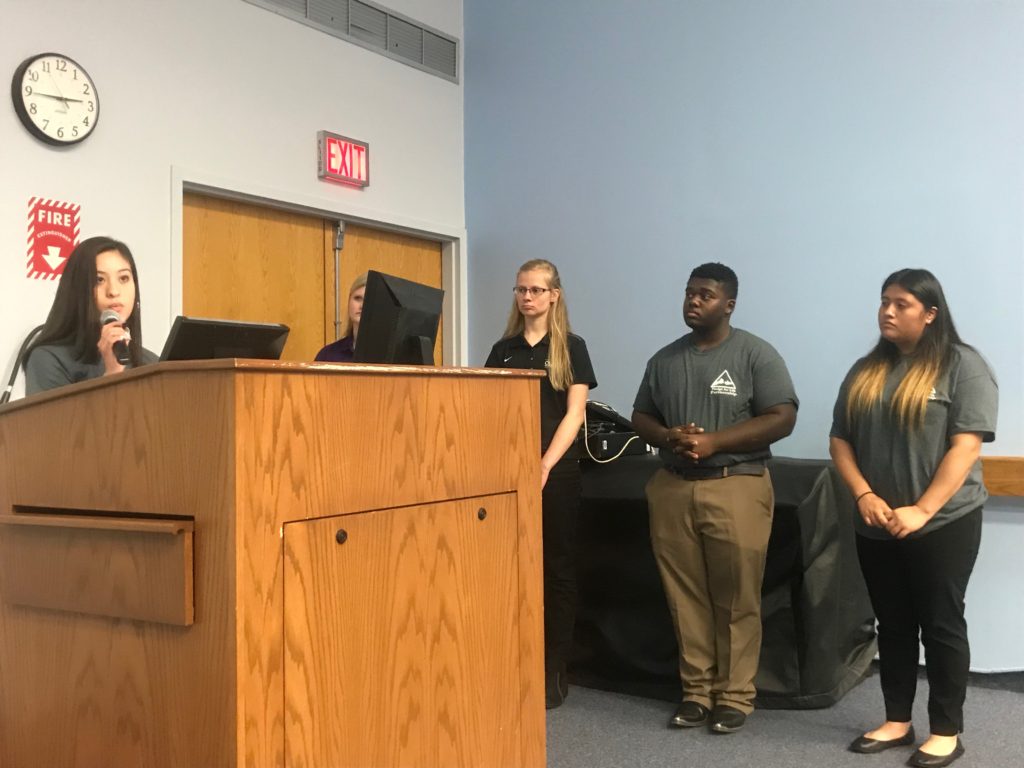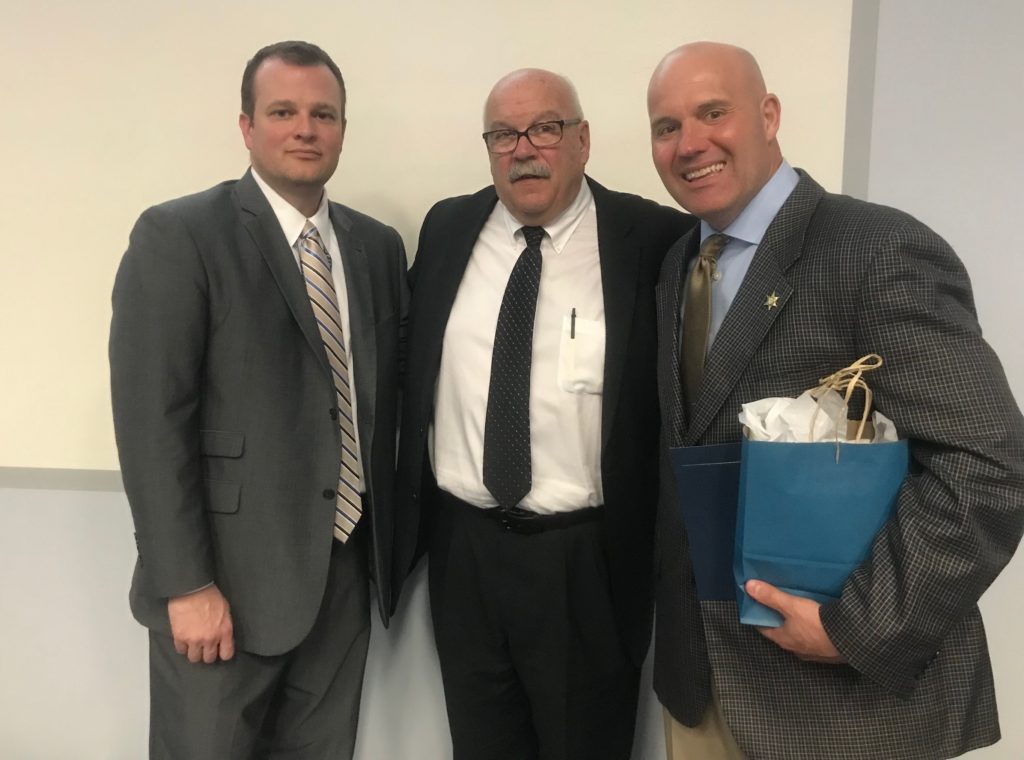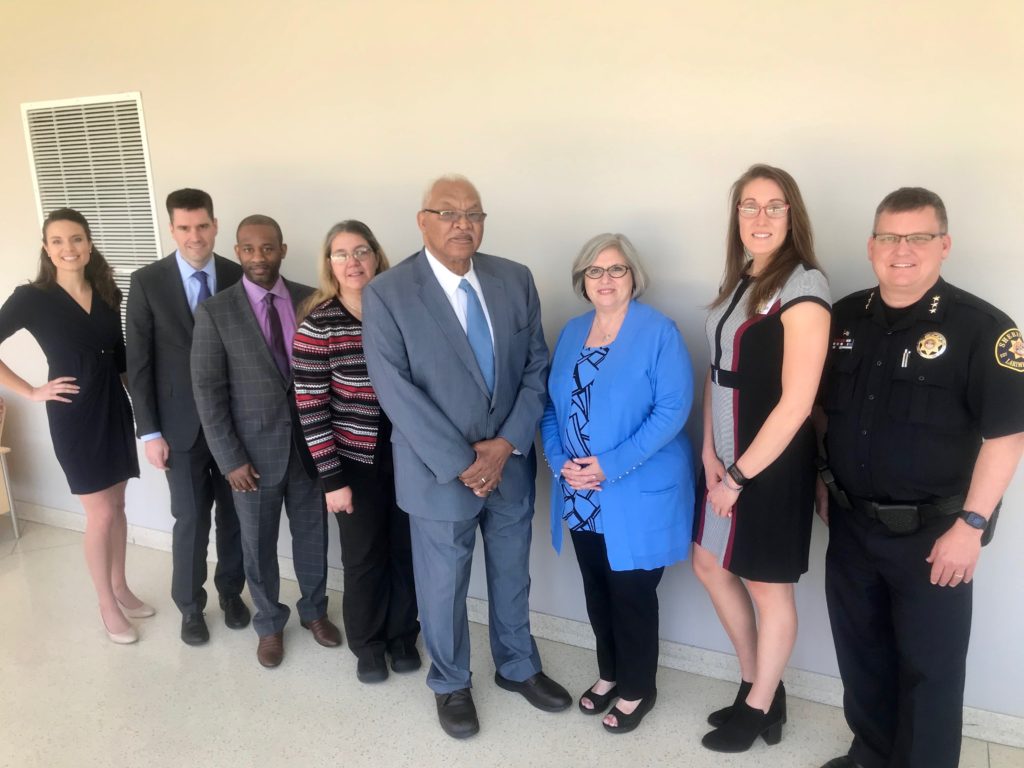Published by the Daily Journal on 4/19/2019
View a live recording of the event on Facebook.
“We love our community, and we want our teens across it to thrive,” said Kate Reed, Pledge for Life Partnership Drug-Free Communities coordinator during the Kankakee Community Summit on Marijuana, Youth and Our Community on Tuesday at Kankakee Community College.
The event was held in partnership of 16 community organizations and featured national and local speakers.
Youth drug use, social justice and financial effect were highlighted. Reed also brought up Illinois Senate Bill 0007, a short title provision that creates the Cannabis Regulation and Taxation Act, an act she feels the legislators will try to fast track. The third reading deadline of the bill, sponsored by Senators Heather Steans and Toi Hutchinson, will be May 2.
“What will the bill look like? There are not a lot of answers,” Reed said. “It’s irresponsible to pass the bill at this time. There needs to be more review.”
Youth speak out

According to Thomas Clarke, director of National Mental Health and Substance Use Policy Lab, U.S. Substance Abuse and Mental Health Services Administration in Washington, D.C., marijuana is the most used drug in the U.S., and 41 million youth ages 12 and older report having used it.
Teens from the Pledge for Life Partnership Youth Advisory Council, Kankakee County Branch NAACP Youth Council and Kankakee County Hispanic Partnership, Kankakee County State’s Attorney’s Youth Advisory Board, KCC and Olivet Nazarene University spoke during the event.
“Alcohol and drug use has a negative impact on the brain,” said Momence High School student Trenten Wils. “One in six teens who use marijuana will become addicted. The industry will target me and my friends to hook us for life.”
Bradley-Bourbonnais Community High School student Rosa Chavez added the industry targets young adults and teens to get customers for life with their marijuana product packaging that resembles popular cereals and candy bars. Sarah Alvord, a student at ONU, reported Colorado has more marijuana-based businesses than McDonald’s and Starbucks combined.
“Do we want to legalize an industry that makes a profit off of addiction?” Chavez questioned.
“One in four 12th-graders stated they would try marijuana or use it more often if it was legal,” said Momence High School student Lizbeth Varela. “Our youth already think marijuana use isn’t that bad. If the government approves it, they will think it’s even less dangerous.”
Higher potency
Since the 1970s, the potency of marijuana has increased as much as tenfold, from 3 to 4 percent to as high as 30 percent today, stated Kankakee County Coroner Bob Gessner. The national average THC potency is 11 percent for flower and 55 percent for concentrates. In states that have commercialized adult-use marijuana, potency is even higher, with THC levels reaching up to 98 percent.
“The general public imagined ‘Joe Mellow’ smoking a joint. In reality, we have a high potency THC product that leads to hallucinations,” said Dr. Karen Randall, vice-president of Case Management, Southern Colorado Emergency Medical Associates.
“The notion of legalization is really commercialization,” said Dana Stevens, director of Local Affairs, SAM: Smart Approaches to Marijuana, California “Marijuana is not the leafy green substance in a baggie anymore. It’s a highly refined, genetically modified product. That’s what commercialization brings to your community.”
Effect on communities
Robert Moore, chairman of Criminal Justice Committee for the State of Illinois NAACP Branches, said, “We [Illinois NAACP] are in opposition to the legalization of marijuana for recreational purposes and the negative impact it will continue to have on the black community throughout Illinois. History has given us a sobering glimpse, and that view is not a pretty picture.”
In Colorado, the marijuana-related arrest rates for African American residents was double that of white residents in 2017. Also, with the advent of legalization, communities of color are subject to disproportionate targeting. In Los Angeles, the majority of dispensaries are in primarily African American communities.
“We believe dispensaries will create more drug dependency in our communities,” said Moore. “Put more impaired people in Chicago or Kankakee and watch the homicide rate rise.”
“Since legalization, we’ve had a tsunami of migrants and homeless moving to our state,” said Randall. Pueblo County has 160,000 residents, 48 dispensaries and 100 legal grow operations. Because school districts in Pueblo were experiencing a 38 percent chronic absenteeism rate, districts changed to a four day a week schedule. In addition, employers are hiring people from out of state because of the lack of workers who can pass a drug test.
Sheriff Justin Smith, Larimer County Sheriff’s Office, Colo., reported there were 472 traffic fatalities in Colorado in 2012, which rose to 648 in 2017. Twenty-five percent of the fatalities had marijuana in their system.
“When pulling over drivers, it’s harder to test for marijuana and prosecuting cases is more difficult. We all know what alcohol does. Marijuana acts differently. But many are also mixing marijuana and alcohol and other drugs,” said Smith. “Even though there are less drug arrests, my jail has exploded in population driven by drug issues.”
Locally, KAMEG director Chris Koerner reported KAMEG seized 22 guns in 2012, 31 in 2015, 42 in 2016 and 71 in 2017.
“If there are indoor grows, what will happen? People will obtain guns to protect their homes and grow operations,” Koerner said.
Revenue?
According to panel members, the cost of legalization outweighs the projected revenue.
Additional costs associated with legalization include increased drugged driving fatalities, increased workplace absenteeism, increased drugged driving serious injuries, increased workplace injuries, increased emergency room visits, increased marijuana concentrate extraction lab explosions, increased homelessness and increased auto damage.
“There was the promise of additional money with the passing of marijuana commercialization. In California, the revenue is only funding .2 percent of our state budget. It’s a drop in the bucket,” Stevens said. “You’ll hear promises of revenue. It just does not materialize.’’
Randall added, “We were promised additional revenue would go to schools. But instead we have normalized drug use.”
“This is not about what’s socially or morally right; it’s revenue driven. This is another way to fill the budget gaps. It’s an awful decision being made for all the wrong reasons,” said Kankakee County State’s Attorney Jim Rowe. “I oppose legalization in Illinois. It does not make safer, strong communities. There’s nothing good that will come out of this legislation. If this generates more revenue for Illinois, they will again squander it. I’m proud to oppose it.”

To send a letter to elected officials opposing the legalization and commercialization of marijuana in Illinois, go to healthyillinois.org or golead.co/act.

